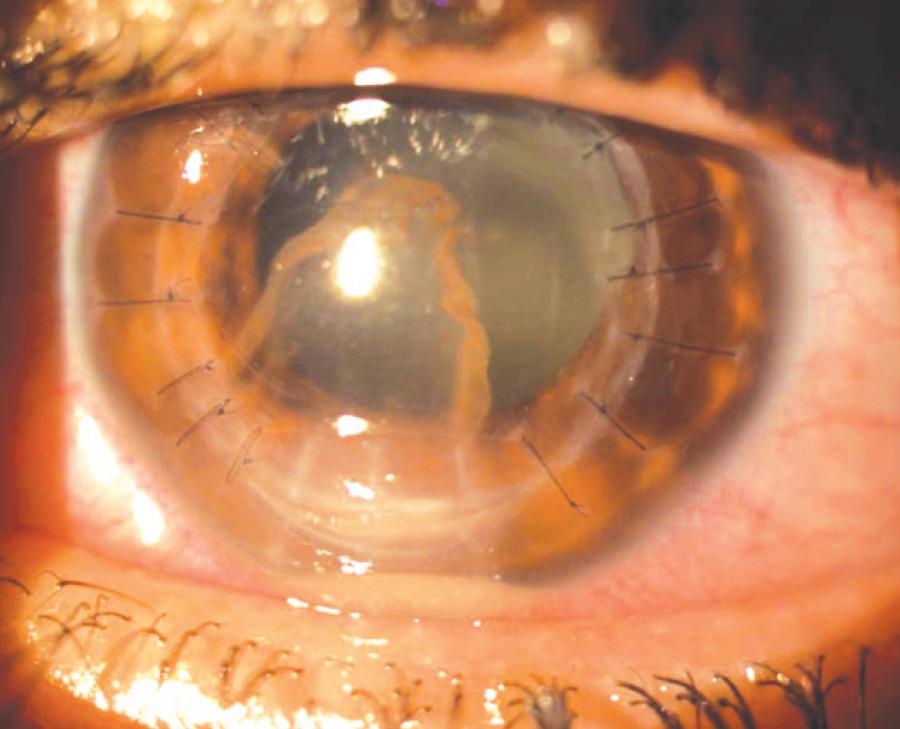ABSTRACT
Purpose:
To assess patient characteristics, risk factors, outcomes, and the treatment of wound dehiscence (WD) in patients after corneal keratoplasty.
Methods:
Retrospective chart review of 11 eyes of 11 patients with corneal grafts who underwent repair of WD from January 1, 2004 to December 31, 2012 at Hospital Oftalmologico de Brasilia.
Results:
Eight (72.7%) patients were men and three were women. Six (54.5%) patients had deep anterior lamellar keratoplasty (DALK) and 5 had penetrating keratoplasty. The mean age at trauma was 31.1 years. The mean time from corneal keratoplasty to WD was 12.82 months (range, 3-33 months). The mean best-corrected visual acuity of patients before trauma was 20/60 (0.48 logMAR) and after final treatment was 20/160 (0.90 logMAR) (P=0.15). In one case, visual acuity decreased to no light perception because of retinal detachment and phthisis bulbi. Accidental blunt trauma and fall were the most common causes of WD.
Conclusion:
Patients who undergo corneal keratoplasty have a life-long risk of WD. The full-thickness rupture at the graft-host junction in our study suggests that the junction remains vulnerable, even following DALK, and can rupture with trauma. In our series, depending upon the severity of the trauma, postkeratoplastic WD can be associated with a good visual prognosis.
Keywords:
Surgical wound dehiscence; Corneal transplantation; Risk factors

